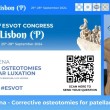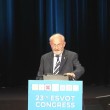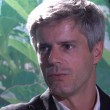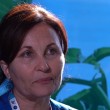Daniel Andreas Koch DVM DECVS
Daniel Koch Small Animal Surgery Referrals, Diessenhofen, Switzerland
Graduation: Where and when
I graduated at the University in Zurich in 1990.
Qualifications
Since 1991, I am Dr. med. vet. (Thesis about bone healing patterns on sheep tibiae, made at the AO institute in Davos, between 1988 and 1991). ECVS examination was passed successfully in 1999 in Ghent/Belgium
Employment after graduation
I left Switzerland immediately after my graduation and went to the University in Utrecht/Netherlands for a small animal internship (January 1991 until June 1992), under the supervision of Jan Gajentaan and Hans de Vries; research about TPO was conducted together the Herman Hazewinkel.
Following appointments up to your current position
I returned back to Switzerland in 1992 and worked as a general practitioner in the clinic of my father (besides: also my grandfather was a veterinarian) until 1994. In between, I had to go into military services for a longer period.
From 1995 until 2004, I was employed by the small animal surgery clinic (Prof. Pierre Montavon) at the university of Zurich/Switzerland as a resident, assistant, assistant professor, head of clinic and deputy of the director. In this time, I made by ECVS diploma, organized many courses and did research on stifle surgery and the brachycephalic syndrome. From 1998 to 2004, I was also head of the small animal dental service.
After my academic period, I stepped back into the private business in 2004, opening a small animal surgery referral clinic in my home town, together with my business partner Martin Bass. We separated in 2010.
Current position
I am founder and director of my own small animal surgery referral clinic in Diessenhofen, which I relaunched in 2010. Since 2012, we do surgeries in a new building. Our clients form form all Switzerland and the neighbouring regions of foreign countries. I employ 3 veterinary technicians, one of them a veterinary anaesthesia nurse, and a part time veterinarian. My main business is orthopaedics, but I also have many upper airway and other soft tissue problems to fix and I still care about dental diseases in small animals.
I still publish original papers about orthopaedics and the brachycephalic syndrome, give lectures all over Europe and Eastern Asia and conduct 3 young veterinarians to their doctor degree.
What or who stimulated your desire to become a veterinarian?
My father obviously had a great influence onto my decision. Being in permanent contact with the pros and cons of a veterinary clinic, I exactly knew, what I had to expect in the future. I always liked to accompany my father, when we went to the farmers and I was impressed, how much freedom he had to organize his day and his business. And last but not least, a veterinarian mostly deals with positive emotions, can heal animals and satisfy customers.
When did you decide to specialize in Orthopaedics, and who were your mentors?
The decision to go into orthopaedics was taken in Utrecht, when I wrote a paper about triple pelvic osteotomy in the group of Herman Hazewinkel, Richard Nap, Björn Meij, and Thijse How. Later, I returned back home from Holland and declared to my father, that I would not take over his business, but rather enter a residency in small animal surgery.
The second major impact came from Pierre Montavon, my boss at the small animal surgery clinic in Zurich. He was extremely dedicated to stifle and hip surgery. The taught to be precise, insist and always stand up, when you fail. He is my “orthopaedic father” and I owe him all my surgical and orthopedic skills.
Slobodan Tepic from Kyon, Zurich gave me the understanding of bone and joint biomechanics. He is still full of ideas and the best help, if I am in orthopaedic troubles.
What do you see as the future of veterinary orthopaedics?
We will have to focus onto toy breed dogs and cats and develop implants and techniques for tiny animals. Patellar luxations and radius/ulna fractures will soon be as usual as in Japan. On the other hand, long bone fractures in dogs will be less, because the law in some country urges potential pet owners to buy small dogs, traffic accidents will be less because of speed limits and many dogs are well educated and therefore do not jump onto the street.
Modern canine breeding programs are still guided by aiming to the extremes. Large breeds become larger, small breeds aver small and so on. Nature has no chance to correct these misguided developments as the human being decides, which individual is eligible for reproduction. This means, that corrective osteotomies will be necessary to fix maldevelopments and reestablish a new biomechanical balance.
Prosthesis will be more important. Elbow and stifle prosthesis are the next to established on the market. The high price is not a major issue, as long as the economical situation will not dramatically alter.
Most orthopedic interventions will be conducted in specialized clinics and by specialized orthopedic surgeons. Good veterinary orthopedic practice will soon be only possible with a lot of investment in machines, implants and diagnostic imaging. Not many customer will accept provisional bone fixation, old fashioned implants or “good luck surgery” and therefore ask for the best care possible for their pets.















